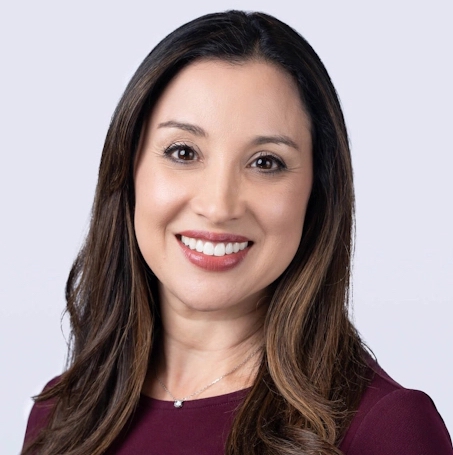 This article is part of an on-going series about technological and AI-related developments and advancements in claims processes and claims departments.View Series
This article is part of an on-going series about technological and AI-related developments and advancements in claims processes and claims departments.View Series
It makes sense that Pie Insurance, which arose amid the explosion insurtechs and fintechs in the businessworld, is embracing the power and promise of artificial intelligence—particularly in its claims operations.
The Denver, Colorado-based insurer has made a name for itself since 2017 by specializing in providing workers’ compensation and commercial auto insurance to small businesses.
Pie Insurance, which touts a data-driven approach with aims to make insurance affordable and easy for small businesses, is a holding company, operating through subsidiaries and partnering insurance agencies that offers coverage across most of the country.
The company, which has an internal data science team, has been an early adopter of AI, adding the technologies to its claims department in several levels.

To get a handle on the changes, Claims Journal spoke with Carla Woodard, senior vice president of claims at Pie Insurance.
Woodard has spent a lot of time in the claims arena. She has been at Pie Insurance since 2022. Before that, she spent 15 years workers’ comp carrier Employers in various director and manager roles.
The conversation has been edited for brevity and clarity.
Claims Journal: What new technology are you integrating into your claims department/processes?
Woodard: Pie originally started using a TPA exclusively to handle our claims, but over the past couple of years, as you may know we’ve turned our focus to managing everything in house. As part of that, we implemented a claims platform through Origami Risk. It’s a cloud-based system and it’s really designed to support our automation, capture our data and give us more real-time decisioning capabilities.
So, with that in mind, we’ve been exploring AI that does a couple of different things in components but also looking at the entire life of claim for automation opportunities. As an example, we’re looking for summarization of large documents. That’s something that our data science team is working on right now, but it’s looking for actionable insights including guidance on whether the content meets jurisdictional requirements for things like impairment ratings, etc.
We’re also exploring some tools to help us gauge quality scores for our telephonic interactions, and that’s based on natural language processing and sentiment scoring. That tech is also going to provide AI-assisted guidance—so, basic AI customer transactions and interactions to resolve simple questions more quickly and effectively for our customers. And then of course, we’re looking from a more broad perspective at an automation plan to ingest data from all the various sources out and populate that data into Origami and then drive automated actions based on business rules and decisioning AI. So, all of these are a combination of tech that we are building in house through our data science team as well as leveraging vendor platforms as part of that overall plan.
CJ: Why are you implementing this technology? What problem is it solving or will it solve?
Woodard: Well really the goal is to deliver on Pie’s mission, and that’s to make commercial insurance and the claims experience as easy and seamless as possible for our small businesses.
You know, this gives us the ability to support scale improve our customer service and allow for more proactive and consistent claims handling.
CJ: How is it working?
Woodard: We’re still very early in the implementation but we’re already seeing value from the enhanced data fields and automation rules, including those for subro and fraud red flag detection.
The long-term vision includes using AI to drive decisioning and automation across the full claims life cycle, but that’s something that we are planning to iterate on and are going to be building over the next couple of years.
CJ: How long has it been up and running?
Woodard: Our platform for claims is currently in our MVP mode. The foundational capabilities are already delivering value but we’re going to be seeing continued rollout and expansion of these capabilities within the next probably two to three years.
The work that we’re doing on document ingestion and fraud red flag detectors though is likely going to be implemented within this year.
CJ: How do employees feel about it?
Woodard: Our claims professionals are so excited about these opportunities, the efficiencies that automation is going to bring to their day-to-day processes. At Pie, we have a very robust stakeholder collaboration method and so we ensure that we have continuous feedback from a cross-functional group of professionals, so this really helps us.
It drives a better understanding of the platform requirements and really, it’s helped us to get our professionals to really embrace the work that we’re doing in this space.
CJ: How do you feel about it?
Woodard: I am so optimistic and confident that the tech is really going to enhance customer outcomes and external efficiencies.
At Pie, obviously the scalability part of it is critical and that’s why we chose a platform that can grow with us and stay aligned with our mission to make insurance simple and accessible for our small businesses, and I’m thrilled about it. I’m very excited to get moving on it as quickly as possible.
CJ: How will you measure the success of this technology? What are the metrics?
Woodard: To begin with we had to come up with some very clear, aligned requirements and make sure that they are delivered accurately and on time. We are looking for measurable lift in the user experience and our claims outcomes when you look at pre- versus post-implementation metrics.
And then things like claim turnaround time, engagement, task automation efficiencies—those are all things that we’re going to be measuring and looking at to give us some indication of the success of the program. Realistically, it’s also a big part of data—so data completeness and availability for regulatory and internal reporting is also another key benchmark that we’re looking at to measure our success.
Was this article valuable?
Here are more articles you may enjoy.


 Abbott Presses Congress for Shield Over Preemie Baby Formula Litigation That Could Cost It Billions
Abbott Presses Congress for Shield Over Preemie Baby Formula Litigation That Could Cost It Billions  Twice Injured Firefighter Loses Second Workers’ Compensation Claim
Twice Injured Firefighter Loses Second Workers’ Compensation Claim  Jump Trading Faces $4 Billion Terraform Administrator Suit
Jump Trading Faces $4 Billion Terraform Administrator Suit  Flooding in California Leads to Soaked Roads, Water Rescues and 1 Death
Flooding in California Leads to Soaked Roads, Water Rescues and 1 Death 